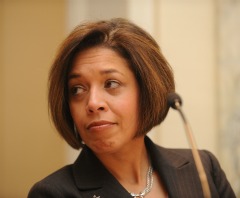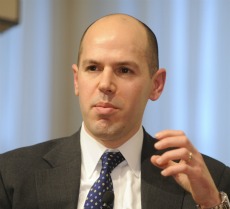The low interest-rate environment and poor investment income are pushing the need for more stringent underwriting for carriers, according to a panel of experts at a recent industry forum.
Property/casualty insurers get part of their revenues from the interest generated by their bond portfolios. But a prolonged period of low interest rates has hampered the industry’s ability to offset its underwriting losses with investment income, said panelists at the Insurance Information Institute’s Property/Casualty Insurance Joint Industry Forum, held last week in New York.
Nearly 70 percent of the P/C insurance industry’s investment portfolio is held in high-quality corporate and government bonds. About 20 percent of the investment are held in diversified stock holdings. The remaining 10 percent is usually held as cash, or very short-term securities.
The interest rates are expected to remain low; the Federal Reserve announced last August that it would leave U.S. interest rates low through mid-2013. Last year, P/C insurers’ poor investment income was especially difficult to swallow because of record-high catastrophe losses from the underwriting side. P/C insurers incurred $32.6 billion in direct insured losses between January and September 2011.

‘Investments Can’t Carry You’
Lori Dickerson Fouche, CEO of Fireman’s Fund, also said the poor investment income is forcing insurers to focus more on the fundamentals. “Investments can’t carry you, and that puts a lot more pressure on operations,” Dickerson said.
“My favorite saying at the moment is ‘hope is not a strategy.’ We have to come back to basics in terms of business. You can’t rely on investment results to get you the kind of returns you need.” She added, “Underwriting discipline, operational effectiveness and pricing — these are the basics of running an insurance company that we have to strengthen.”
Matthew Mosher, a senior vice president at A.M. Best, said that, “Clearly, low interest rates are going to hurt earnings and it is going to push the need for more stringent underwriting.”
Jay Gelb, managing director and senior equity analyst at Barclays Capital, also noted that the low interest-rate condition poses a problem. “We think [low interest rates will be] a big headwind for earnings and returns on equity for at least the next few years when you essentially have zero percent interest rates at the short end of the curve and the long end continues to flatten,” Gelb said.

In the past, insurance companies got a 10 percent return on equity in P/C insurance just off the investment portfolio, but clearly, that benefit has been reduced, Gelb said.
From the reinsurer’s perspective, Eric Smith, CEO of Swiss Re America, said low interest rates were causing extreme difficulty for reinsurers. “When events occur you have to replenish capital and rely on investment results to do that, but they are not there now,” he said.
On the brighter side, Gelb said, this low interest-rate environment “gives more reasons to raise prices, which is one of the things we are seeing coming out of the last few quarters.” Commercial rates are continuing to rise, particularly in catastrophe-prone areas, he said. “Within three years, that trend will accelerate and we should have a full-on hard market,” Gelb said.
Hard Market ‘Still a Year or Two Out’
Mosher from A.M. Best added that in terms of the hard market, it is still a waiting game. “We’re not quite there yet. We’re still a year or two out,” Mosher said. He said that premium growth will continue to improve from where the industry was in the last three or four years, “but I don’t expect in 2012 that we’ll see a massive increase in premium.”
Mosher added that if catastrophe losses return to normal levels, the returns will improve, but it will still be a tepid recovery at best.
The industry posted the worst underwriting results since 2001 last year, and returns on equity sunk into the low single digits, according to the Insurance Information Institute.
Panelists said there are two ways to help improve underwriting profit going forward: by raising rates and through great underwriting.
Liberty Mutual CEO David Long added that homeowners and workers’ compensation insurance in particular are fundamentally underpriced at the moment.
Topics Carriers Profit Loss Underwriting Property Casualty Market
Was this article valuable?
Here are more articles you may enjoy.


 Court Orders Justice Family Coal Companies to Pay $1M to Liberty Mutual Unit
Court Orders Justice Family Coal Companies to Pay $1M to Liberty Mutual Unit  10 Highest Class-Action Settlements in 2025 Eclipsed $70B Total: Duane Morris
10 Highest Class-Action Settlements in 2025 Eclipsed $70B Total: Duane Morris  Georgia Republicans Move to Scrap State Income Tax by 2032 Despite Concerns
Georgia Republicans Move to Scrap State Income Tax by 2032 Despite Concerns  Experian: AI Agents Could Overtake Human Error as Major Cause of Data Breaches
Experian: AI Agents Could Overtake Human Error as Major Cause of Data Breaches 

